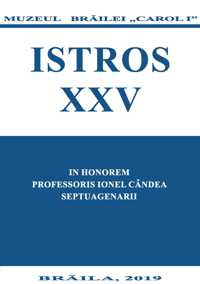Ce-i cu faţa aceasta lungă? Măşti decorative de cai în mormintele îngheţate din Siberia şi relaţia lor cu proprietatea şi teritorialitatea
Why the Long Face? Horse Headdresses of the Frozen Tombs of Siberia and their Relation to Ownership and Territoriality
Author(s): ANNA-ELISA STÜMPELSubject(s): Archaeology
Published by: Editura Istros - Muzeul Brailei
Keywords: Scythians; Pazyryk; Horses; Territoriality; Cultural landscape; Siberia; Scythian animal style;
Summary/Abstract: Commonly referred to as ‘Scythians’ in literary sources, the archaeological record of these Eurasian nomads shows a vast diversity across the regions once occupied by them, which ranged from Central Inner Asia to the Eastern European Steppes, suggesting a differentiation into local groups. An uniting element between these local deviations is the appreciation of their horses, which is reflected in their burial customs: either horse equipment or the animals themselves were buried alongside their owners, together with their other worldly belongings. Amongst others, this behaviour can be observed in five large burial mounds located in Pazyryk Valley belonging to the Pazyryk Scythians. Within these burials, various well-preserved horse corpses were found together with their complete riding outfits, some even with headdresses. In this paper, I will argue that the motifs chosen for the riding outfits and headdresses are indicative of a territorial organisation and that especially the headdresses acted as dynamic territorial markers, based on theories put forward by Sykes (2014). These were fashioned individually for each clan, and, therefore, rather than for ritualistic purposes, they showed each clan’s coat of arms. This would mean that the horses carried not only humans but also meaning in the cultural Scythian landscape.
Journal: ISTROS
- Issue Year: XXV/2019
- Issue No: XXV
- Page Range: 187-240
- Page Count: 54
- Language: English, Romanian
- Content File-PDF

